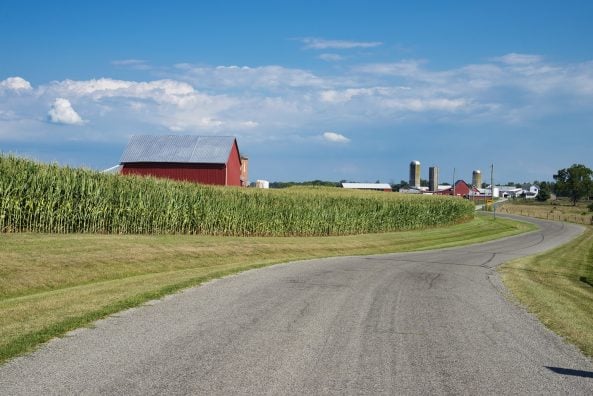Farmer’s Guide to Trucking Regulations available to Ohio Farm Bureau members
The guide includes a farm driver checklist, overview of state and federal regulations and exemptions, CDL qualifications and more.
Read More
Crops generally are looking good across our area.
Both corn and soybeans were planted early enough to have a good start. Then we have had enough rain, along with the hot weather, to encourage some exceptional growth of corn and beans. Now if we can continue to get regular moisture during the growing season, we should have good yields this fall. In farming, it is always “if” conditions are right for top yields.
Most local wheat has been harvested in the past couple of weeks. Reports are that yields have been generally good but they vary all over the place. Where it has been planted in good soils and well managed, some yields have exceeded 100 bushels to the acre. Other fields have been as low as 30 bushels per acre.
Some of our wheat goes for milling and eventually goes into bakery products. Livestock farmers feed small amounts. The wheat market got a boost recently when China decided to buy what they called two cargoes. I don’t know how many bushels that amounted to, but it did help. China can be an uncertain market because no one seems to know what they are going to do next.
We don’t grow a lot of acres of oats but those who do grow them will be harvesting them soon. They are usually used for livestock feed and the straw goes for bedding.
Looking at the dairy picture, we are fortunate to have a few good dairy farms left in the area. They are good, efficient herds because they have to be to stay in business given the milk prices of recent years. Those prices look some better right now but have been very volatile, varying widely.
A recent market report says that cheese prices on the wholesale market set a new record last week. Block prices on the wholesale market went up to $2.915. Wholesale cheese is sold in both blocks and barrels with blocks bringing a higher price. Cheese is a main ingredient that helps set the farm price for milk. It is sometimes said that “so goes the cheese price, goes the milk price.” Milk pricing is a very complex procedure because it is used for so many different products.
Recent heat waves have caused some drop in milk production. Heat puts cows under stress with a drop in production. Where cows are housed in free stall barns, farmers go to great lengths to keep them comfortable. Huge electric fans hang from the ceiling and are automatically controlled to run when temperatures get too high.
So far, the dairy farmers I have contacted said they have not had any real drop in production from the heat. They have been able to keep the cows comfortable. Now let’s hope the milk price stays good enough so they can pay the electric bill because all those fans take a lot of electricity.
Have you ever heard of “corn sweats?” It is a term new to me. According to the National Center for Atmospheric Research, through a process called evapotranspiration the corn plant pulls moisture from the soil into the atmosphere. One acre of corn sends 3,000 to 4,000 gallons of moisture per day into the air. This doesn’t actually raise the air temperature but raises the humidity level making it more uncomfortable outside.
Another problem with the heat is fly control. Several different kinds of flies bother cattle. In free stall barns they are usually controlled by with air movement and cool temperatures. Out on pasture they are more difficult to control.
Unless it is bitter cold, it is usually easier on livestock when it is cooler than in the extreme temperatures we have been having recently.
At the same time, those who have to milk the cows in today’s milking parlors need to be kept comfortable to do a good job. So usually there are several fans running in those parlors to keep air moving.
Submitted by John Parker, who is retired from The Ohio State University and is an independent writer for Farm Bureau.
Ohio Farm Bureau Mission: Working together for Ohio farmers to advance agriculture and strengthen our communities.


The guide includes a farm driver checklist, overview of state and federal regulations and exemptions, CDL qualifications and more.
Read More
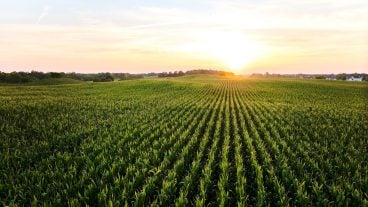
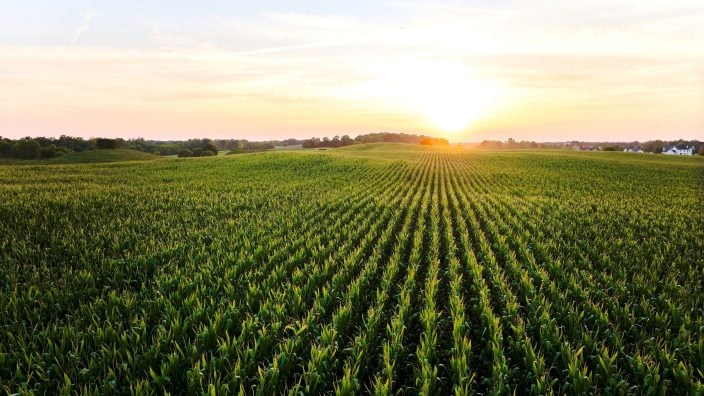
The emergency fuel waiver to allow the sale of summer gasoline blends containing 15% ethanol will lengthen the period during which Americans can continue buying E15 from June 1 to Sept. 15.
Read More

The Small-Scale Food Business Guide covers federal and state regulations for selling food products such as raw meat, dairy, eggs, baked goods, cottage foods, fruits and vegetables, honey and more.
Read More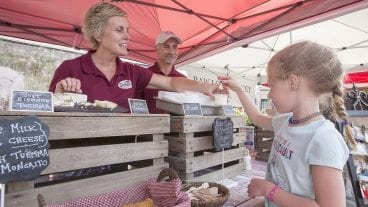
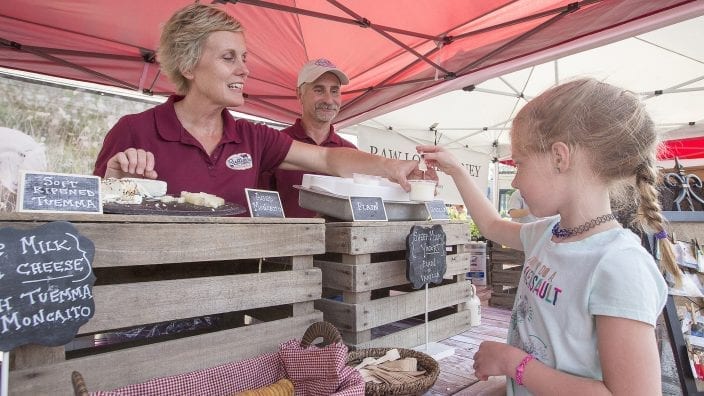
New resources and technology are broadening the different types of sales tools and strategies available to farmers.
Read More

ODA will enroll 500,000 acres into the program for a two-week sign-up period, beginning April 22, 2024, through May 6, 2024. Contact local SWCD offices to apply.
Read More

Katie Share of Columbus has been named ExploreAg and Youth Development Specialist for Ohio Farm Bureau.
Read More

Mary Klopfenstein of Delphos has been named Young Ag Professional and Ag Literacy Program Specialist for Ohio Farm Bureau.
Read More

The plan has been updated to give sole proprietors access to more rate stability and a smart solution that offers potential savings on health care.
Read More

The American Farm Bureau Federation, in partnership with Farm Credit, is seeking entrepreneurs to apply online by June 15 for the 2025 Farm Bureau Ag Innovation Challenge.
Read More

Adele Flynn of Wellington has been elected treasurer of the Ohio Farm Bureau Federation and now holds the third highest elected office in Ohio’s largest and most influential farm organization.
Read More